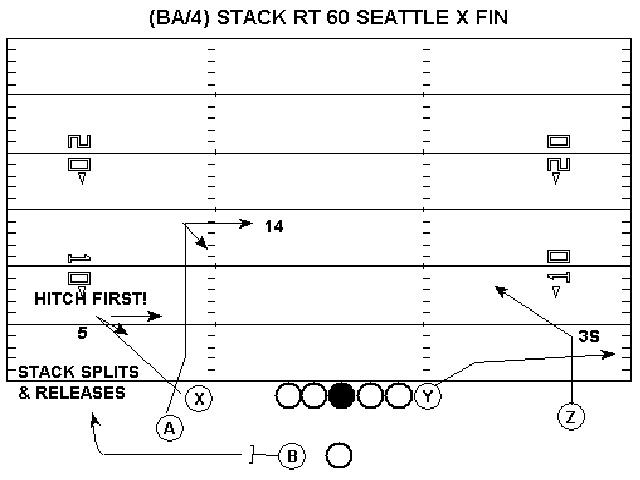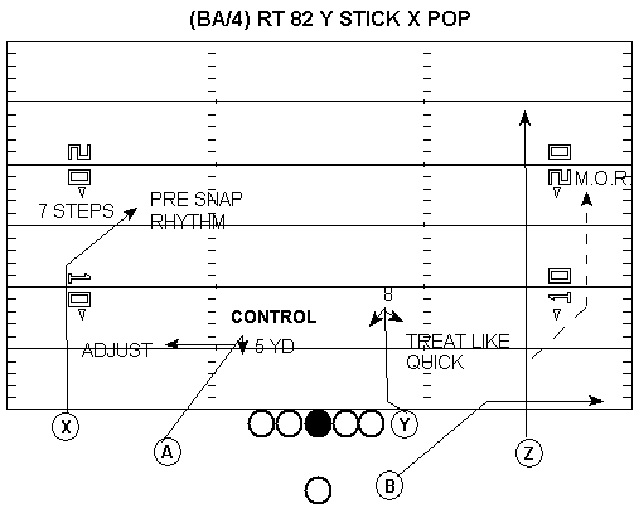With quick screens becoming more of a part of the picture offensively, the role of quick passes in our arsenal changed dramatically. When I arrived at North Lamar HS in 2000, I began tinkering with our quick passing game in an attempt to maximize our "down the field" opportunities vs. man coverage. With so few true opportunities during the course of a game (not to mention practice limitations, as our kids played both ways) to create explosive plays, I wanted to be able to capitalize whenever that opportunity prestented itself. Through constant evolution, the versatility of the quick passing game has expanded far beyond outside recievers running simple hitch, slant, or fade routes, with the quarterback being forced into an all or non propostion depending on the defense of that particular down.
It should also be noted that the backside "FIN" route is run with the exact same mechanics as the normal hitch; if there is no ball on rhythm, the receiver can continue inside, creating an interior high-low stretch for the quarterback.
- We could help protect the passer based on the rhythm of the pass package
- The concepts provided simple keys for the quarterback, and could be run at the varsity and sub-varsity level
- We could feature the best players we had
- We could give the defense multiple looks
- We could concentrate on easy throws provided to us
- Because of no need for route conversion (hitch to fade), we could almost treat the throw to the flag as an "on air" throw vs. Cover 1 or Cover 2









 RSS Feed
RSS Feed
